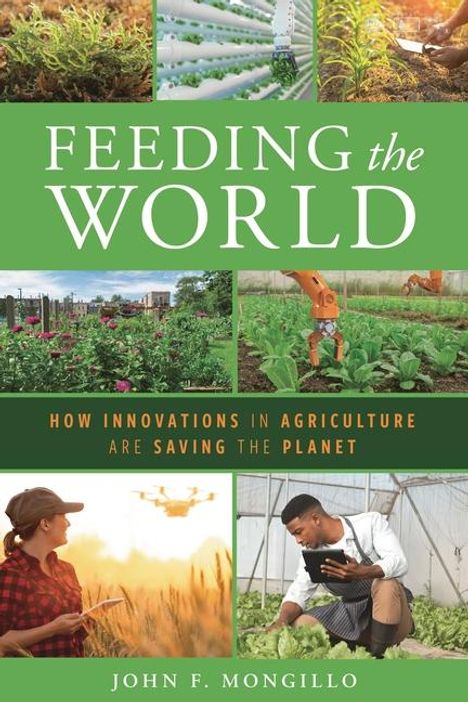John F Mongillo: Feeding the World, Gebunden
Feeding the World
- How Innovations in Agriculture Are Saving the Planet
Sie können den Titel schon jetzt bestellen. Versand an Sie erfolgt gleich nach Verfügbarkeit.
- Verlag:
- Bloomsbury Academic, 02/2026
- Einband:
- Gebunden
- Sprache:
- Englisch
- ISBN-13:
- 9798881807689
- Artikelnummer:
- 12316095
- Umfang:
- 184 Seiten
- Gewicht:
- 503 g
- Maße:
- 229 x 152 mm
- Stärke:
- 28 mm
- Erscheinungstermin:
- 19.2.2026
- Hinweis
-
Achtung: Artikel ist nicht in deutscher Sprache!
Klappentext
An accessible guide to modern and evolving farming practices to help combat climate change.
The United Nations reports that "climate change is the defining issue of our time, and we are at a defining moment." Climate change issues are in the news every day. From disasters ranging from the California wildfires to floods in Brazil, droughts in East Africa and rising sea levels globally, the threats and challenges caused by climate change are already present and rapidly increasing.
In Feeding the World: How Innovations in Agriculture Are Saving the Planet , John F. Mongillo looks specifically at how climate change impacts agriculture production by creating adverse effects on human health, loss of wildlife, food and water insecurities, devastation to ecosystems, and even animal and human migration. Mongillo advocates that these are solvable issues, though. Through interviews and case studies of the changemakers in the agricultural industry, Mongillo highlights positive projects working to mitigate climate change, illuminating how a wide variety of people and organizations are creating salvable projects to curtail the impact of a warming world. From farmers to colleges technicians, and government and non-government organizations, these projects include regenerative farming practices, building vertical farms, engaging in soil-less farming, constructing rooftop gardens, and using precision agriculture with robots, drones, GPS systems, and even salt-water farming.
No one book can keep track of all the changing events and developments of climate change and its impact on agriculture and human health. However, Feeding the Worldprovides an excellent introduction for developing a working knowledge of climate-related issues and a call to service for readers wanting to make a difference. This is an essential guide to possible solutions, understanding how the agricultural industry works, and the effect on the economy, environment, and technology.


